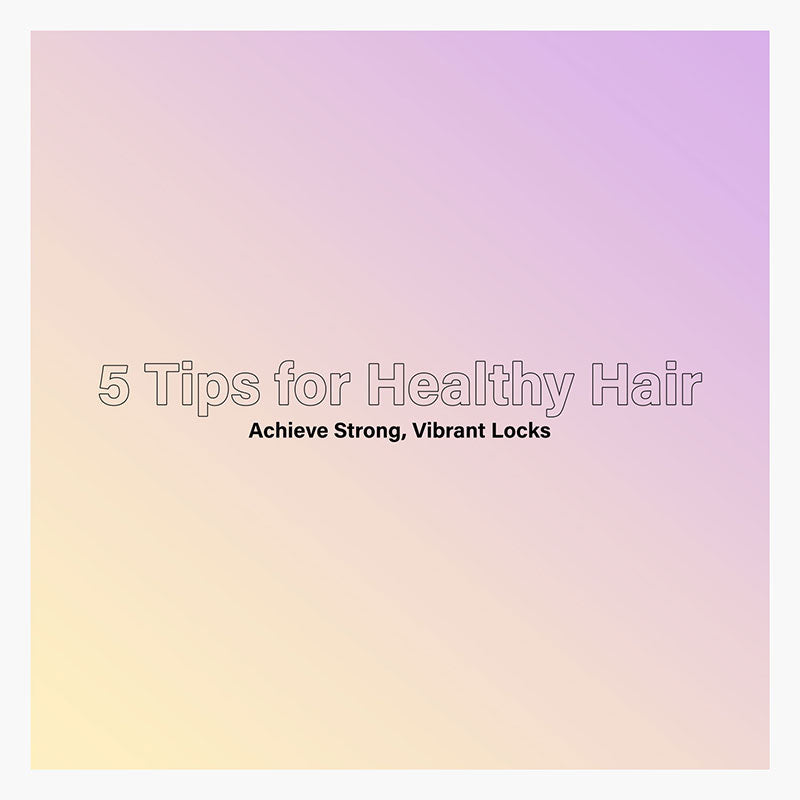Introduction
Everyone wants to have healthy, shiny, and beautiful hair. However, maintaining healthy hair can be challenging, especially with the numerous hair care products and treatments available today.
This essay will explore five practical tips for achieving and maintaining healthy hair, including dietary recommendations, product selection, and daily hair care practices. Let's dive in!
Tip 1: Eat a Balanced Diet
Nutrients for Hair Health
The first step to maintaining healthy hair starts from within. A balanced diet rich in essential nutrients like protein, biotin, vitamins, and minerals is crucial for hair growth and strength. These nutrients help to nourish the hair follicles, promote healthy hair growth, and prevent hair loss.
Foods to Include
To ensure that your hair gets the nutrients it needs, incorporate these foods into your diet:
- Lean protein sources: chicken, turkey, fish, and legumes
- Iron-rich foods: spinach, lentils, and red meat
- Biotin-rich foods: eggs, nuts, and whole grains
- Vitamin-rich fruits and vegetables: berries, citrus fruits, and leafy greens
- Healthy fats: avocado, olive oil, and fatty fish
Tip 2: Choose the Right Hair Care Products
Shampoo and Conditioner
Using the right hair care products is essential for healthy hair. Look for shampoos and conditioners free from harsh chemicals like sulfates and parabens, which can strip your hair of its natural oils and cause dryness. Instead, choose products tailored to your hair type, whether dry, oily, or color-treated, to ensure the best results.
Styling Products
When it comes to styling products, opt for those with natural ingredients and avoid those containing alcohol, which can cause dryness and damage. For heat styling, use heat protectants to minimize hair damage.
Tip 3: Protect Your Hair from Damage
Heat Protection
Excessive heat styling can cause hair to become dry, brittle, and prone to breakage. To minimize heat damage, limit the use of heat-styling tools like flat irons, curling wands, and hairdryers. When using these tools, always use a heat protectant and choose the lowest heat setting necessary to achieve your desired style.
Avoid Chemical Treatments
Hair treatments like coloring, perming, and relaxing can weaken hair and make it more prone to breakage. Try to limit these treatments, and when you undergo them, ensure they are done by a professional to minimize damage.
Tip 4: Practice Proper Hair Care Techniques
Gentle Brushing
Being too rough when brushing your hair can lead to breakage and damage. Instead, use a wide-tooth comb or a brush with soft bristles to detangle your hair gently. Start from the ends and work up to the roots to avoid causing unnecessary stress to your hair.
Avoid Tight Hairstyles
Tight hairstyles like ponytails, braids, and buns can cause tension in the hair follicles, leading to hair breakage and even hair loss. Instead, opt for loose hairstyles that allow your hair to breathe, and avoid wearing the same hairstyle daily to minimize stress on your hair.
Tip 5: Keep Your Scalp Healthy
Scalp Care Tips
A healthy scalp is essential for healthy hair growth. Keep your scalp clean by washing it regularly with a gentle shampoo. Additionally, you can use a scalp exfoliator or a soft-bristled brush to remove dead skin cells and promote blood circulation.
Identifying Scalp Issues
If you notice any scalp issues like redness, itchiness, or flaking, it's essential to address them immediately. Consult a dermatologist or trichologist for a proper diagnosis and treatment recommendations.
Conclusion
Achieving and maintaining healthy hair combines proper nutrition, using the right hair care products, and practicing good hair care techniques. By following these five tips, you can help ensure your hair remains strong, shiny, and beautiful.
Remember, consistency is critical, so make these tips a part of your daily routine for the best results.
FAQs
Q: How often should I wash my hair?
A: The frequency of hair washing varies depending on your hair type and personal preferences. Generally, it is recommended to wash your hair every 2-3 days. However, if you have oily hair, you should wash it more often, while those with dry hair can go longer between washes.
Q: Is it okay to use a hairdryer every day?
A: Frequent use of a hairdryer can cause heat damage, leading to dryness and breakage. To minimize this risk, it is best to let your hair air dry whenever possible or use the lowest heat setting and a heat protectant when using a hairdryer.
Q: How can I tell if my hair is damaged?
A: Some signs of hair damage include split ends, excessive dryness, frizz, breakage, and lack of shine. If you notice any of these issues, consider adopting healthier hair care practices and using products designed for damaged hair.
Q: How long does it take to see improvements in hair health?
A: Hair health improvements can vary depending on factors such as your hair type, the extent of damage, and the changes you make in your hair care routine. However, you might notice improvements within a few weeks to a few months.
Q: Can I repair severely damaged hair?
A: While it's difficult to completely reverse severe hair damage, you can take steps to improve the health of your hair and prevent further damage. For example, adopting the tips mentioned in this article, getting regular hair trims, and using hair masks or deep conditioning treatments can help improve the overall health of your hair.

